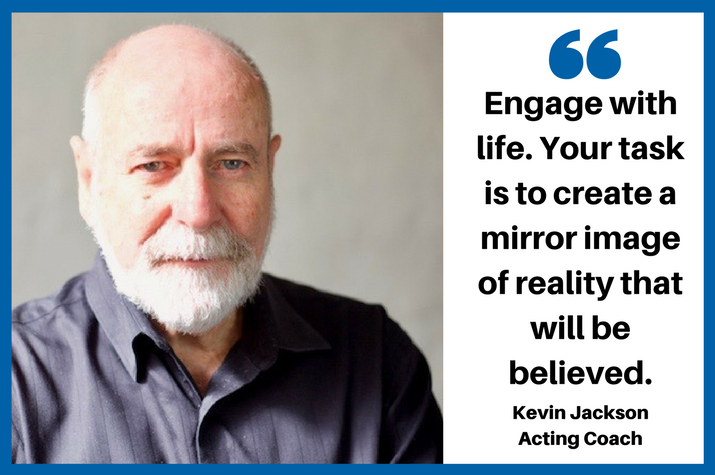Ten top tips: Kevin Jackson

With more than 30 years’ experience, Kevin Jackson is one of Australia’s most highly regarded acting teachers. Here he shares his ten top tips for performance success.
Kevin Jackson is one of the founding coaches of The HubStudio in Sydney where he teaches both a masterclass and technique series. Kevin Jackson taught at NIDA for 27 years and at the American Conservatory Theatre for 21 years. His clients have included Cate Blanchett, Sarah Snook, Ryan Corr and hundreds of other actors. Full class details here.
1.Decide whether acting is a passion. To endure the ups and downs of your career you will definitely need passion. If you dread any aspect of what it takes to give a great performance it should signal that this is not a passion but a 'job'.You will not succeed in the long term if that is anywhere in your consciousness.
2.Be conscientious in developing and securing the basic skills of your instrument. Physical flexibility and awareness. Vocal flexibility and awareness. Body and voice classes.
3.Engage with life. Your task is to create a mirror image of reality that will be believed. Unplug that iPhone; look, listen, smell, taste and touch the world about you. This is the development of your primary emotional resources - from your first hand experiences. Let the real world inform you.
4.Be actively engaged with the resources about you. See everything: film, television, theatre, art, music. Read all kinds of literature, both period (e.g.Dostoevsky's Crime and Punishment) and contemporary (e.g. Hanya Yanagihara's A Little Life) as well as magazines, newspapers and anything else you can get your hands on. This is the development of your secondary emotional resources - from your second hand experiences.
5.In preparing a script:
(a)Read your play. Film script.
(b)Read as many of this writer's other plays as possible. If it is a film, check out the other films that this writer [or director] has made.
(c)Read any critical response, academic essays to this author's work.
(d)Read as much bio-graphical information as possible on your 'author'.
6. Study your script for what I call the Linear Work.
(a)Use your Dictionary for meanings of words that you don't know.
(b)Use your Dictionary to look up words that you believe you know the meaning of. This is to encourage you to be specific, not to be to be approximate. More importantly, to be able to personalise the meaning of the word from the character's point-of-view and not just from your own.
(c)Be extremely sensitive to the clues that the writer has given you with their syntactical guidance. The syntax is the beginning of the music scoring of the speeches. Ask why it is a comma there and semi-colon here. Why there is an ellipse or a beat or a pause or a silence. To acknowledge that they are on the page from the writer for you to utilise.
(d) Be observant about any instruction the writer has given you: 'Angrily', 'In Desperation’. You as the actor may not feel that is what you would do in that situation but after all David Mamet's Roma or Beth Henley's Babe, is not you.
7.Develop the back story; the character's biography, the defining moments of his or her life.
(a)It begins with accurate and painstaking extraction of the information that the writer has given you on the page.
(b)Follow up with a social, cultural, political study of the life of the character.
(c)Put the two together to write a character biography.
8.Check out the Stanislavsky Questions.
(a) Given Circumstances.
Who am I?
Where am I?
When is it?
(b) Objective/Action.
What do I want?
Why do I want it?
How do I get it?
9.Remember to discover the similarities between you and the character. Make sure you dwell on the differences and find the method to take you there.
10.All of this work should be done before rehearsal or arriving on set. You are meant to make informed offers to the director and the other actors. You prepare the Plan A, so that you can immediately go into the Plan B; to be in the moment, throw away the homework and trust it will be there to support you as you play on the floor.
This article was originally published in the Spring 2017 issue of The Equity Magazine.